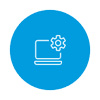
Practice performance metrics are in focus whenever a new tool is introduced to improve patient care. In this series, we’ll focus on practice success and patient care when adopting or maintaining an eConsult program. Many of these strategies apply to increasing the adoption of any new technology or program.
There are a few common challenges to effective care and practice success:
- Primary care providers lack the tools and time to help patients navigate care. The average PCP sees between 10-20 patients per day. Patient care is their goal. Adding new technology adds to their workload.
- At the same time, not getting specialist advice for the patient is creating additional work for PCPs. More than 40% of referrals never get scheduled. That means more work for the PCP as patients boomerang back to the primary care setting with the same untreated condition.
- 25% of our healthcare costs are for unnecessary tests and treatments.
How do eConsults solve these challenges? eConsults are proven to provide specialty healthcare cost savings for patients, providers and payers. eConsults also support value-based care in tangible and practical ways. They create a path to faster diagnosis and treatment, improve or eliminate wait times for specialists’ visits, increase access to sub-specialties, and minimize worsened health outcomes resulting from delayed patient care. At-risk practices see tremendous cost savings by eliminating unnecessary specialty visits, reducing ED use and preventing hospital admissions and readmission.
But once you have an eConsult program in place, how do you measure success and drive additional value for your practice?
In this series, we focus on best practices for measuring the impact of eConsults on practice performance and patient care:
- Provider Adoption
- Patient Access
- Clinical Quality
- Patient Benefits
- Practice Cost Savings
In this blog, we will focus on how provider adoption of an eConsult program impacts practice performance metrics.
Educate and engage physicians before measuring
Physicians are busy. They are rarely involved in selecting new technology and often have limited visibility about “why” they should use a new tool. A successful eConsult launch educates and engages physicians on the benefits to them and their patients. Here are a few ways you can gain significant adoption:
- Outline the benefits to their patients. Talk about wait times for specific specialties in your area and discuss patient roadblocks, like transportation, time off work and childcare.
- eConsults eliminate many care coordination challenges by delivering the patient recommendation to the PCP’s inbox.
- Provide an incentive. Get your providers up and running fast with a little extra cash when they request an eConsult. It increases the likelihood that they will start and continue to use the technology.
- Emphasize the cost savings not just to the practice but to the patient as well.
Measuring provider adoption
The long-standing management tenet, “what gets measured gets managed,” is likely influenced by the Hawthorne effect, which holds that individuals modify their behavior when they are aware that they are being monitored.
Now that you’ve got your providers ready. Start measuring their engagement. The long-standing management tenet, “what gets measured gets managed,” is likely influenced by the Hawthorne effect, which holds that individuals modify their behavior when they are aware that they are being monitored.

Logins
Monitor who has logged in post-training.

eConsults
How many eConsults per week? What’s the average number per provider?

Champions
Who are your early adopters and consistent users?
How quickly you see the benefits of eConsults correlates to how quickly your providers access the platform for the first time. AristaMD tells you who hasn’t logged in so you can engage those providers or set up additional training.
The number of eConsults requested should increase each week, but you also want to know that providers are requesting more eConsults. The average number of requests per provider tells you how often users keep coming back to the tool. The more they return, the more value they’ll see in eConsults.
Every new program needs a clinical champion. Identify your early adopters. They can help spread the word about the benefits of the solution. Find out who your top performers are. Ask your top performers for testimonials and use cases to improve your practice performance metrics. These users are more likely to convince their colleagues to use eConsults.
This sample AristaMD report shows a trend typically seen with a new practice. It’s typical to see a few early adopters. As these early adopters see the benefits of eConsults, the pressure builds for other providers to start using the platform.
% Active Requesting Providers

As you can see, This practice did not achieve its Requesting Providers goal until 8 months after the program’s launch. Delayed adoption is a common problem. There are often 1 or 2 PCPs who don’t want to change how they practice, which is why it’s important to:
- Communicate the patient benefits.
- Discuss the value to care continuity and their increased ability to maintain direction over patient care.
- Offer incentives for eConsult usage.
- Emphasize the cost savings not just to the practice but to the patient as well.
These strategies can help overcome objections from PCPs who are reluctant to try new technology. We recommend that practices set a goal for eConsults per Month as well. This goal is directly impacted by the number of PCPs using the platform, but it also indicates if PCPs are consistently using eConsults across a variety of specialties. Engaging your champion to advocate for eConsults can increase the number of eConsult requests per PCP – and help you deliver faster specialty care for your patients at a lower cost.
We recommend targeting 20-30% of all referrals going to eConsult. Our research indicates that this range will capture those patients with non-procedural, non-emergent specialty care needs. At-risk practices with usage in this range achieve the maximum cost savings from their programs. To reach this goal, every provider in the practice will need to leverage the program and request eConsults in multiple specialties.
One way to evaluate the percentage of your patient referrals eligible for eConsults is to leverage our free referral review service. Our team of registered nurses completes the review, who will review pending referrals to determine those eligible for eConsult or patients at risk of symptom escalation who would benefit from an interim care plan. Interim care plans provide a back-stop to ED and urgent care utilization.
Our nurses can also submit the eConsult on behalf of the provider and notify the provider when the eConsult is complete.
eConsults Submitted

The practice in this chart launched its eConsult program about 6 months ago. The chart eConsults Submitted reveals a common problem. Some PCPs often get “stuck” using eConsults for only 1 or 2 specialties, so the greatest number of users only request one eConsult per month.
This would not be surprising or even concerning in the first month or two after the program launch. As time passes, this could significantly impede your ability to realize optimal results for your patients and your practice.
Tactics to improve provider adoption and drive practice performance metrics
When there are a significant number of providers in the practice that are still not using the service. Leadership and your Champions need to engage with these providers right away. You can start by setting up a follow-up training session for the holdouts. AristaMD also sends timely reminders to these providers, including:
- Training videos.
- eConsult benefits.
- And use cases.
- Engage your Champions. Ask them to share:
- Why and when they use eConsults?
- Specific examples of patient benefits.
- What types of responses do they receive?
Re-engagement meetings are also helpful to review how to use the platform. Include a use case presented by an eConsult Champion presenting a use case. Hearing from a peer has a tremendous impact on PCPs who are hesitant to use eConsults.
Read our next installment: Measuring Patient Access to Specialty Care.
